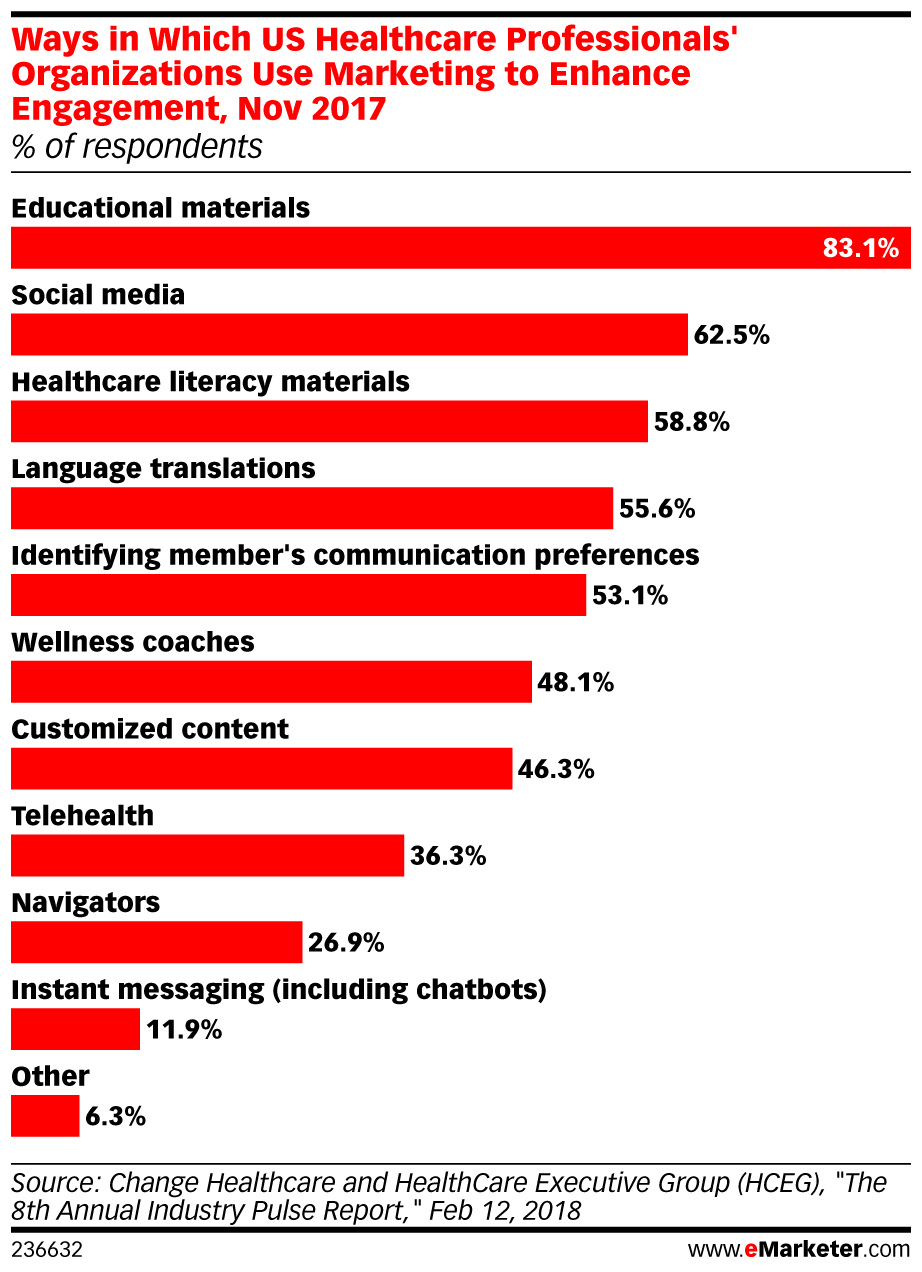3 Priorities Essential to Your 2020 Healthcare Communications Strategy
9/19/2019 Tom Wozniak

Increasing costs of labor, pharmaceuticals, and medical devices continue to drive up healthcare expenses. At the same time, revenue from private and government insurance plans are being squeezed. This growing divide shows no sign of slowing down.
So it should come as no surprise when healthcare CEOs consider cost control as the “most urgent strategic priority” for healthcare executives [source].
And when it comes to cost control, reducing spend on print and digital communications has become an obvious temptation. Especially since the return on the impact of any given communication can be hard to quantify.
But that becomes a catch-22 because so many healthcare organizations are working with outdated clinical content, overstretched in-house teams, and limited multichannel distribution of their communications. These factors are necessary to be successful — factors that need proper budget support to positively impact long-term financial goals, performance, and patient care/satisfaction.
To effectively increase the efficacy of your communications strategy, all while spending the same amount (or maybe even less) as before, will require some reprioritization in your communications strategy.
Priority No. 1 – Consolidate the decision-making process
Most healthcare organizations do not correctly leverage the total organizational spend for their communication products and needs. Multiple departments use print and digital communications to deliver their messages, but by dividing the responsibility for communications between groups you increase overhead costs and the likelihood of:
- Production mistakes
- Poor messaging
- Duplicate efforts
- Inconsistent branding and voice
Coordinating and consolidating the decision-making processes would allow you to accomplish the same or improved results with less budget. This is optimized performance.
Priority No. 2 – Identify members’ preferred channels
Healthcare organizations know they need to be more proactive with how they get important information to their customers. Up until now, this typically means creating more materials for more communication channels, which gives end-users more ways to look at information.
But more isn’t always the right answer.
In the "8th Annual Industry Pulse Report" from the HealthCare Executive Group (as cited by eMarketer), more than half (53.1%) of U.S. healthcare professionals’ organizations say identifying communication preferences is one way they use marketing to enhance engagement.
Patients are more likely to read and positively react to communications if they are delivered in their preferred medium, whether that means print, digital, video or in combination. We’ve seen this firsthand through our client work.
The challenge, however, is getting into the execution of this plan and the realization of just how big of an undertaking this really is. Simply implementing a coordinated, layered approach with print, digital, and video is often too much for most internal teams to handle alone.
Take the time to analyze your customer base and determine what they will respond to best, and give them the option to choose.
Priority No. 3 – Take steps toward better content personalization
The biggest communications budget in the world won’t help you if a majority of your customers are not a) opening your communications, b) understanding your message, or c) interested in what you have to say.
This is where a lack of personalization comes into play. Interestingly enough, a global survey by Salesforce revealed when internet users (18+) were asked how they feel about personalization:
- 53% expect offers from companies to always be personalized
- 51% are comfortable with companies applying relevant information about them in exchange for personalized engagement.
Looking just at 19-37 year olds, those numbers jump to 67% and 64%, respectively. Unfortunately, healthcare organizations struggle with this growing demand for personalized, relevant content.
Today’s healthcare consumers are being asked to take a more active role in their health. As they do, they’re struggling to fully understand the wide array of information available in the marketplace. This confusion makes personalized communications all the more necessary.
With a widespread demand for content, healthcare organizations are still dealing with specific and intricate information related to individuals and personal scenarios. A tailored approach to each patient should encourage engagement, trust and appreciation.
Our professional opinion
After reviewing these priorities, you may realize (through no fault of your own) that your organization/department/team is ill-equipped to achieve them.
In my experience across healthcare and other related industries, making the decision to outsource certain activities (or processes as a whole) has been one of the most effective strategies for print and digital communications.
And the why is simple: healthcare providers don’t specialize in communications strategies and media channels — and that’s OK. (I don’t perform medical procedures on myself for the same reason.)
In addition to optimizing spend and ROI, by looking externally for support, additional positive outcomes often include:
- Increased speed to market
- Improved brand control
- Accelerated digital migration
- Optimized supply chain
After all, when we find someone who is the best at what they do and then ask them to do it for us, good things happen. The same goes for your communications strategy.
Tom Wozniak is the Vice President of National Healthcare Sales at RRD. Head here to learn more about RRD's full suite of communications solutions for the healthcare space.